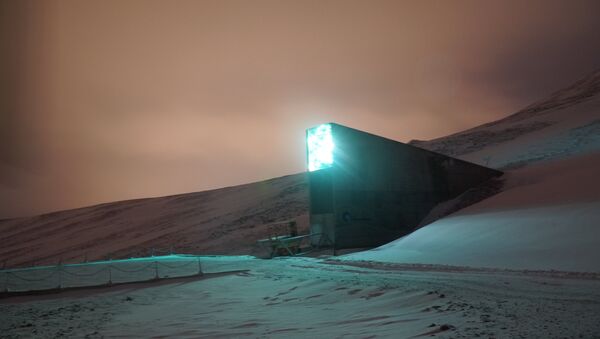By 2100, Svalbard's temperatures could rise by an whole 10 degrees, a new study on the state of climate in the Norwegian archipelago that hosts the so-called Doomsday Vault, has found, warning of accelerated warming.
In addition to a mind-blowing 10-degree temperature spike envisioned as the worst-case scenario, the area around the Doomsday Vault could see a 65 percent increase in annual precipitation, the report commissioned by the Norwegian Environment Agency and carried out by the University Centre of Svalbard (UNIS) said. Even the scenario billed as average will lead to 7-degree temperature rise and major changes in precipitation.
These changes are predicted to shorten the snowy season, hasten erosion, accelerate permafrost thaw, as well as trigger more landslides, avalanches, and increase the global sea level.
READ MORE: Norway's 'Doomsday Vault' Not 'Doom-Proof' Enough
All of these bode ill for the Doomsday Vault, which has already suffered challenges posed by climate change. In 2017, the vault's entrance tunnel was flooded as a result of thawing permafrost. The changes predicted by the report will further threaten the stability of the frozen ground upon which the facility rests.
While the entire Arctic is said be warming up faster than other areas of Earth, Svalbard's specific conditions makes the warming and its side effects even more extreme, earning it the moniker of "The Arctic's Hot Spot". The Doomsday Vault's surroundings in particular have seen an unparalleled warming in recent years. The report has attributed this to the fact that Svalbard and the surrounding ocean are milder, wetter and cloudier that the average for the latitude, associating it with the Icelandic Low and the West Spetsbergen current.
This March became Svalbard's hundredth month in a row with temperature above the climatic norm, the newspaper Aftenposten reported. Some months even featured temperatures 14 degrees above the norm.
READ MORE: Doomsday Nation: Norway to Open Apocalypse-Proof Book Vault
The Svalbard Global Seed Vault, often referred to as the Doomsday Vault stores almost 1 million samples of seeds, representing mankind's agricultural history. The vault was founded in 2008 on the island of Spitsbergen near Svalbard's "capital" of Longyearbyen and is seen as a last-resort back-up seed bank aimed to withstand war, accidents, and natural disasters. The location's key features, such as permafrost and solid rock allow for the seed samples to remain frozen even without power.

